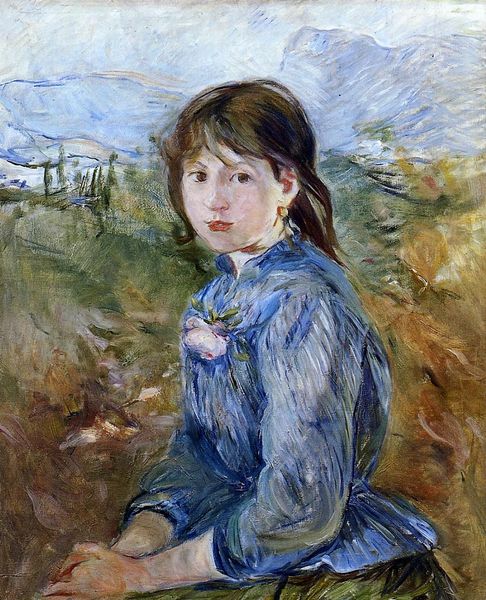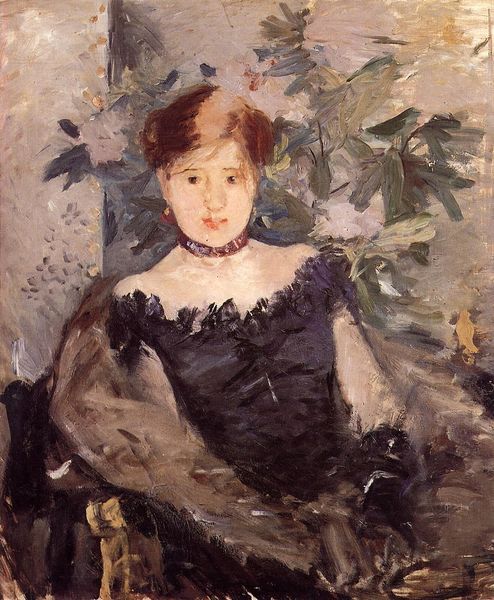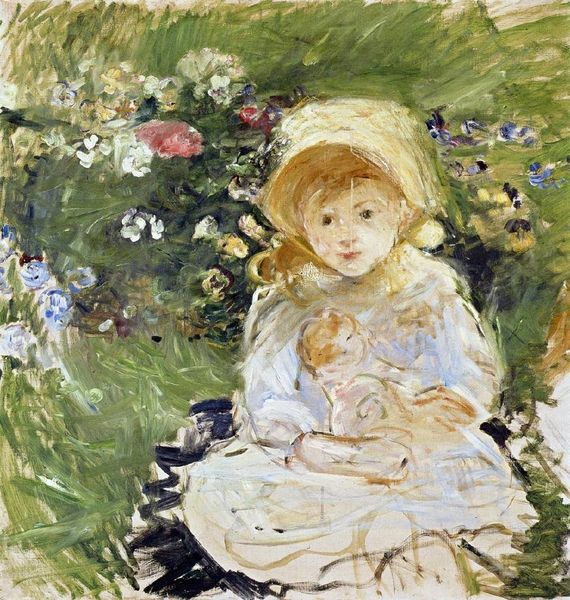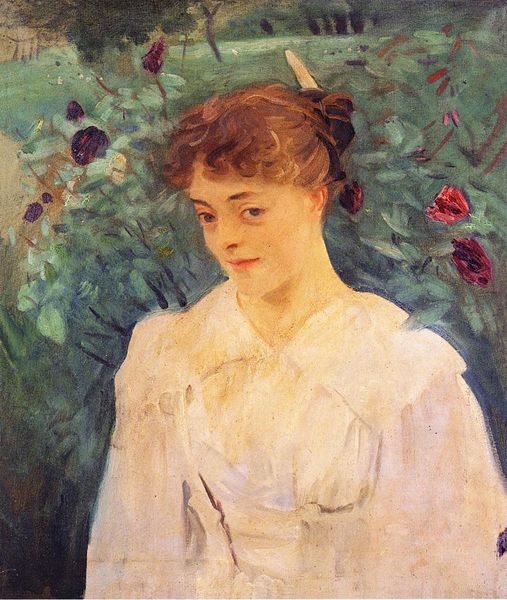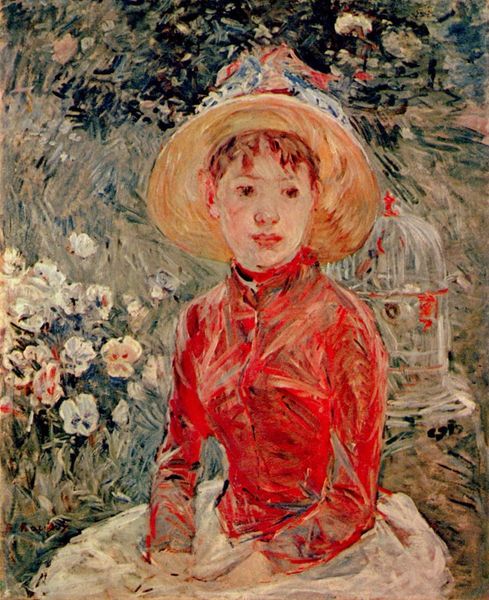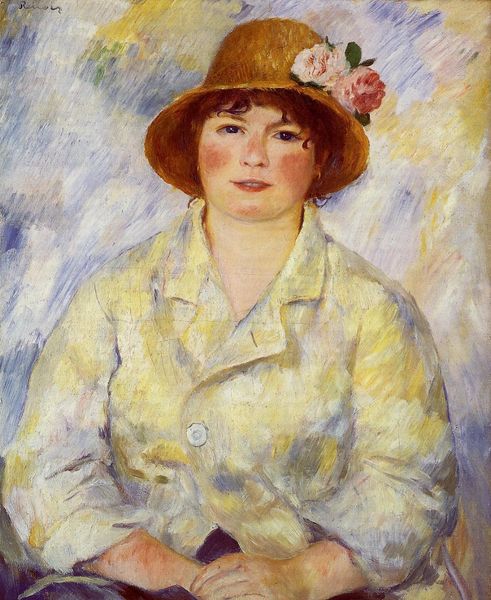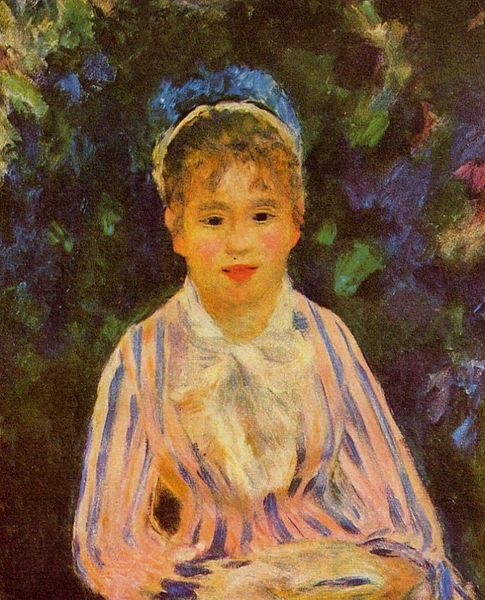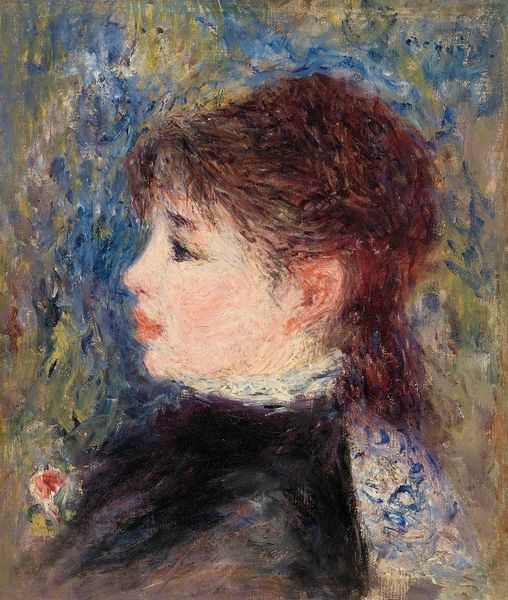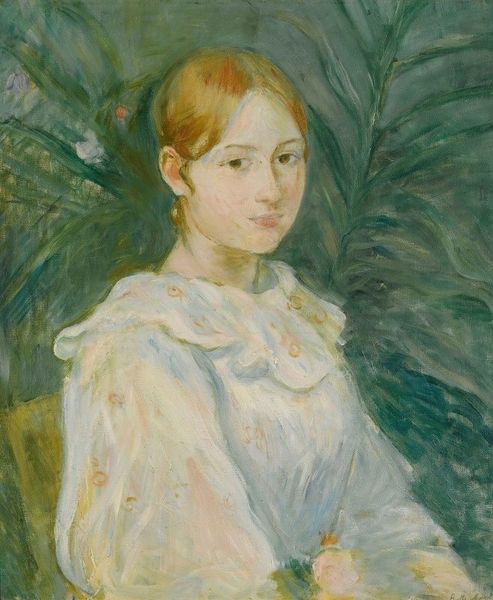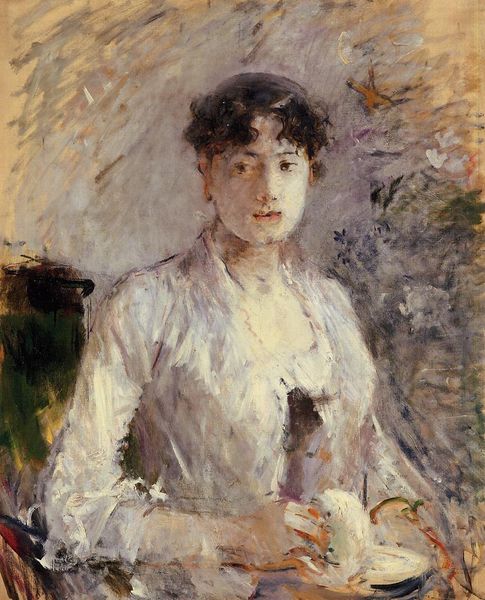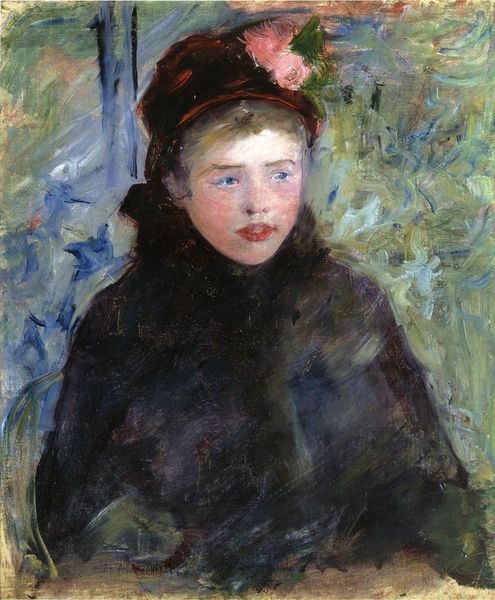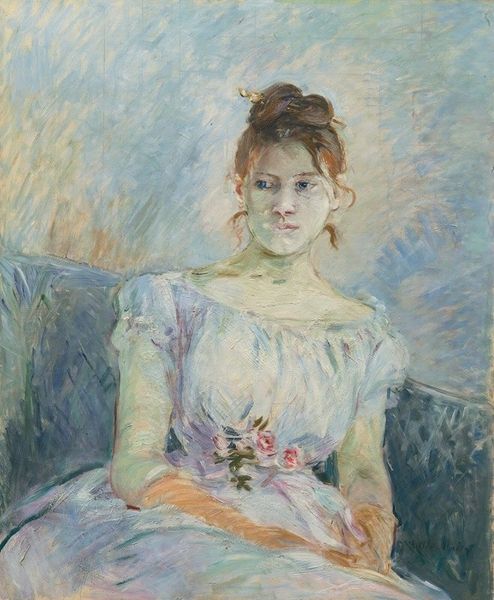
Copyright: Public domain
Editor: This is Berthe Morisot's "Portrait of a Young Lady," painted in 1878. It feels both intimate and distant, like a fleeting impression captured in oil. How do you interpret this work, especially given the social context of women artists at the time? Curator: This piece is fascinating precisely because of Morisot's position. As a woman Impressionist, she was navigating a male-dominated art world while simultaneously engaging with very feminine subjects. Look at the setting: a domestic space, but not rendered with hyper-realism. Instead, it's a suggestion of nature, blurring the lines between interior and exterior, societal expectations and personal freedom. Doesn’t it challenge traditional portraiture and the objectification of women? Editor: It definitely feels less formal than portraits by her male contemporaries. I'm curious, how might feminist theory help us understand the pose and expression of the sitter? Curator: Exactly. The woman’s gaze isn’t inviting in the conventional sense; she's present, self-aware. Her posture, though seemingly relaxed, suggests a subtle resistance, a refusal to be passively consumed by the viewer's gaze. Morisot gives agency to her subject in ways that challenge the patriarchal gaze so dominant in 19th-century art. Consider also how Impressionism itself, with its focus on fleeting moments and subjective experience, offered a language for expressing female perspectives that had long been marginalized. Do you see the correlation? Editor: I think I do. It's like she's capturing not just a likeness but an interiority, a sense of the subject's own experience within the constraints of her time. It encourages me to see past the surface and to examine how women artists like Morisot subverted expectations. Curator: Precisely. And in doing so, she paves the way for future generations to challenge conventions and represent diverse identities and experiences through art.
Comments
No comments
Be the first to comment and join the conversation on the ultimate creative platform.
